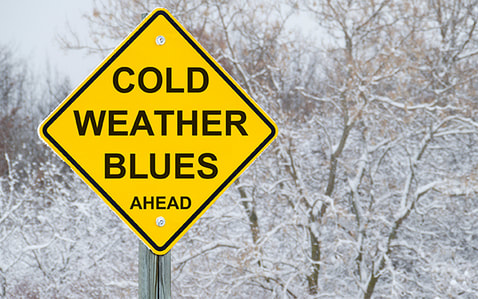 by Tara Watkins, LICSW Punxsutawney Phil may not have seen his shadow this year, but for some of us the hope of six potential less weeks of winter may still not be enough to stop what is commonly known as the winter blues or Seasonal Affective Disorder. About twenty percent of Americans experience some form of winter blues and an estimated 10 million experience Seasonal Affective Disorder. According to the National Institute of Mental Health, the main risk factors for SAD are age, sex, family history of depression, distance from the equator, and a history of depression or other mood disorders. Studies have shown that young adults and women are more likely to experience SAD, with three out of four being women. However, when men do experience SAD symptoms, they are usually more severe. So, what exactly is SAD? SAD is a type of depression that comes and goes with the four seasons. Symptoms may vary depending on the time of year. Typically, SAD manifests the most during the colder months of late autumn through winter – when days are shorter, darker and chiller. The exact cause for SAD is unknown. However, there is some evidence that it may be related to the body's level of melatonin and serotonin. Melatonin is a hormone secreted by the pineal gland that regulates the sleep-wake cycle. Darkness stimulates the production of melatonin, preparing the body for sleep. As the winter days get shorter and darker, melatonin production in the body increases and people tend to feel sleepier and more lethargic. Individuals with SAD may also have trouble regulating their levels of serotonin, a neurotransmitter that influences mood. Research suggests that people with SAD may produce less Vitamin D in response to sunlight. (Vitamin D is believed to play a role in serotonin activity.) Insufficiency of vitamin D is associated with clinically significant depression symptoms. There are a range of symptoms for winter SAD, but some of the most commonly reported include: fatigue (paired with oversleeping), trouble concentrating, chronically low moods, irritability, greater appetite, strong carb cravings (which can lead to weight gain), and greater desire to be alone. Self-care is important for everyone, but for those with the winter blues or SAD it is vital. Experts recommend monitoring mood and energy level, taking advantage of available sunlight, planning pleasurable and physical activities, approaching the winter season with a positive attitude, and, when symptoms develop, seek help sooner rather than later. Feeling like the winter blues or SAD might be getting you down? Below are a few other suggestions/strategies that you may wish to explore:
Life often gets in the way even for the most highly motivated among us, therefore it is important to have a plan and make it part of our regular routines help prevent and manage the winter blues or SAD. If you think you or someone you love may be experiencing the winter blues or SAD and would like help with addressing their symptoms or finding help, please reach out to [email protected] or 401-428-4084. _____________________________________________________________________________________ Reference Sources: "How can you cope with seasonal affective disorder?" by Maria Cohut, Ph.D. Medical News Today, November 24, 2017. "How to Cope with Seasonal Affective Disorder," by Lizz Schumer The New York Times, January 23, 2018. "Seasonal Affective Disorder (SAD)," by Lawrence Robinson, Jennifer Shubin, and Jeanne Segal, Ph.D. HelpGuide, October 2019. "Seasonal Affective Disorder" Psychology Today Comments are closed.
|
Samantha ClarkSamantha Clark is part of the Kesher Worker team at Temple Sinai. Kesher is the congregational outreach program of Jewish Collaborative Services of Rhode Island, funded by the Jewish Alliance of Greater Rhode Island and private donors. Katie can be reached at 401.415.8213 or by emailing Archives
April 2021
Categories |

Affiliated with the Union for Reform Judaism
30 Hagen Avenue • Cranston, RI 02920 • 401-942-8350 Office: dottie@templesinairi.org Rabbi Jeffrey Goldwasser: [email protected] |
Want to sign up for the weekly Sinai Scroll email?
Click here to receive weekly updates on Temple services, events and a message from the Rabbi. |


 RSS Feed
RSS Feed

